We’re thrilled to bring you a special edition of Sea Stories, featuring an update from Fredrik and Nancy in Alaska! (Fredric and Nancy have a great photojournal on our blog of their voyages together from 2021-2022.)
This time they traveled with not just one boat, but two… their own Salish Voyager “Wild Places” and their friends’ 17′ Jersey Skiff traveled together on a fun vacation through Prince William Sound this past July. Wonderful to see their real-world experience in comparing and contrasting these two ships with shared heritage. Both of these boats share the same hull design, so if you’re a fish looking up from the water at the boat, they’ll look just about identical!
Dispatch from Fredrik and Nancy – July in Prince William Sound

After two full summers of sailing and rowing in Southeast Alaska, our Salish Voyager, “Wild Places,” took it easy this summer. We spent a few relaxed weeks cruising around Prince William Sound with friends and neighbors.
About the time we bought “Wild Places,” our neighbors, the Spanglers, graduated their growing family of four from a sailing canoe to a Jersey Skiff. This summer we finally got to sail together. Our voyage was the first time two Gig Harbor Boat Works boats have been seen together in this part of the world. We were hailed over several times to chat with curious boaters.
While each boat fit our individual needs— a couple on a long expedition or a family with two children out for a couple of weeks—the two boats traveled together even better than we expected. We anticipated the Salish Voyager would take the lead when rowing and the Jersey Skiff when sailing, yet the difference was surprisingly small.
Comparing the Salish Voyager and Jersey Skiff

With the two sliding seats, Fredrik and I traveled slightly faster in calm water under oar. However, the bigger difference was not in speed of travel but in ease of travel. Everyone who rowed with us commented on how less demanding rowing was with two people. The Jersey Skiff has room for only one sliding seat, so the Spangler family has one person row, while the other crew members rest and get ready to jump on the oars next.
Under sail, in light winds, our Salish Voyager kept up surprisingly well. We often played leapfrog or completed crossings in unison. It felt safer to have another boat nearby, a luxury neither party had enjoyed on previous trips.
A loose schedule allowed for plenty of time to fish, hike, play, and explore. Fredrik and I started our trip a week or so before the Spangler family, so we could camp with other friends who had kayaks. We also had enough time to do a quick sailing loop around Culross Island before meeting the Spanglers on the northern end of the island.
Together we circumnavigated Perry Island, which has amazing hiking and easy access to flower-covered alpine ridges. Good weather, and even more importantly, a good weather forecast, allowed us to visit the Dutch Group a remote cluster of small islands well offshore. There we found great camping, abundant wildlife, and puffins!
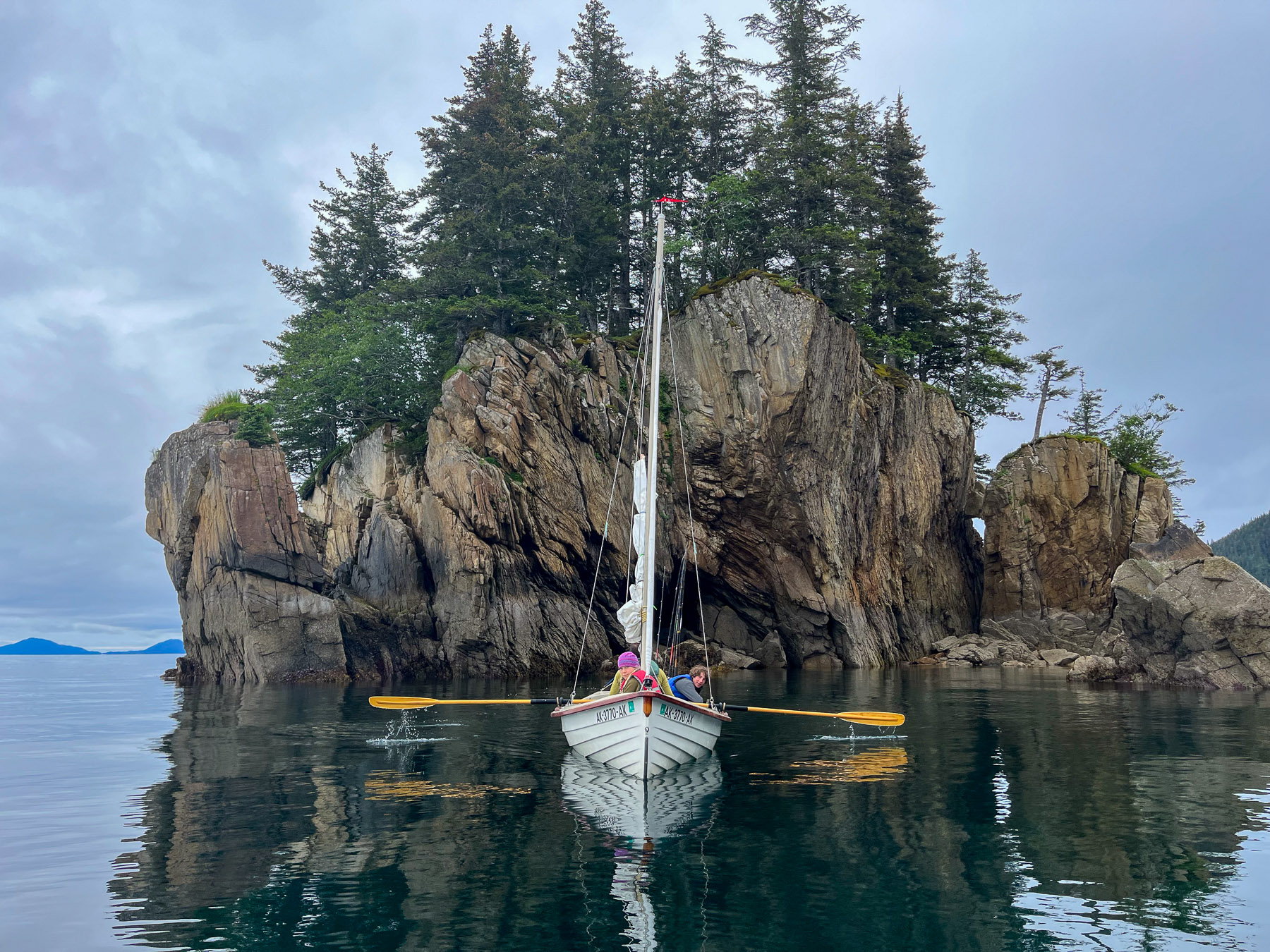


Modifications for Fishing and Foraging
Dinner was almost always fresh from the sea. We enjoyed lots, of salmon filets and halibut tacos. While we have had an exceptionally rainy summer in Alaska, we lucked into nice weather and lots of gentle sailing breezes on our trip. Where our previous trips were 70 percent rowing, I think Fredrik and I may have hit 70 percent sailing this July.
Around camp, the conversation often drifted to minor modifications that each family has made to make their boat fit their needs. Kirby and clan installed a removable wooden foredeck that serves as a platform for children to sit on in the boat with storage underneath. In camp that same platform serves as a kitchen table and fish cleaning station.
The homemade fishing pole holders, made of wood and ABS pipe, on our back decks are almost identical. (Fredrik and I had copied Kirby’s design when we first got our Salish Voyager)
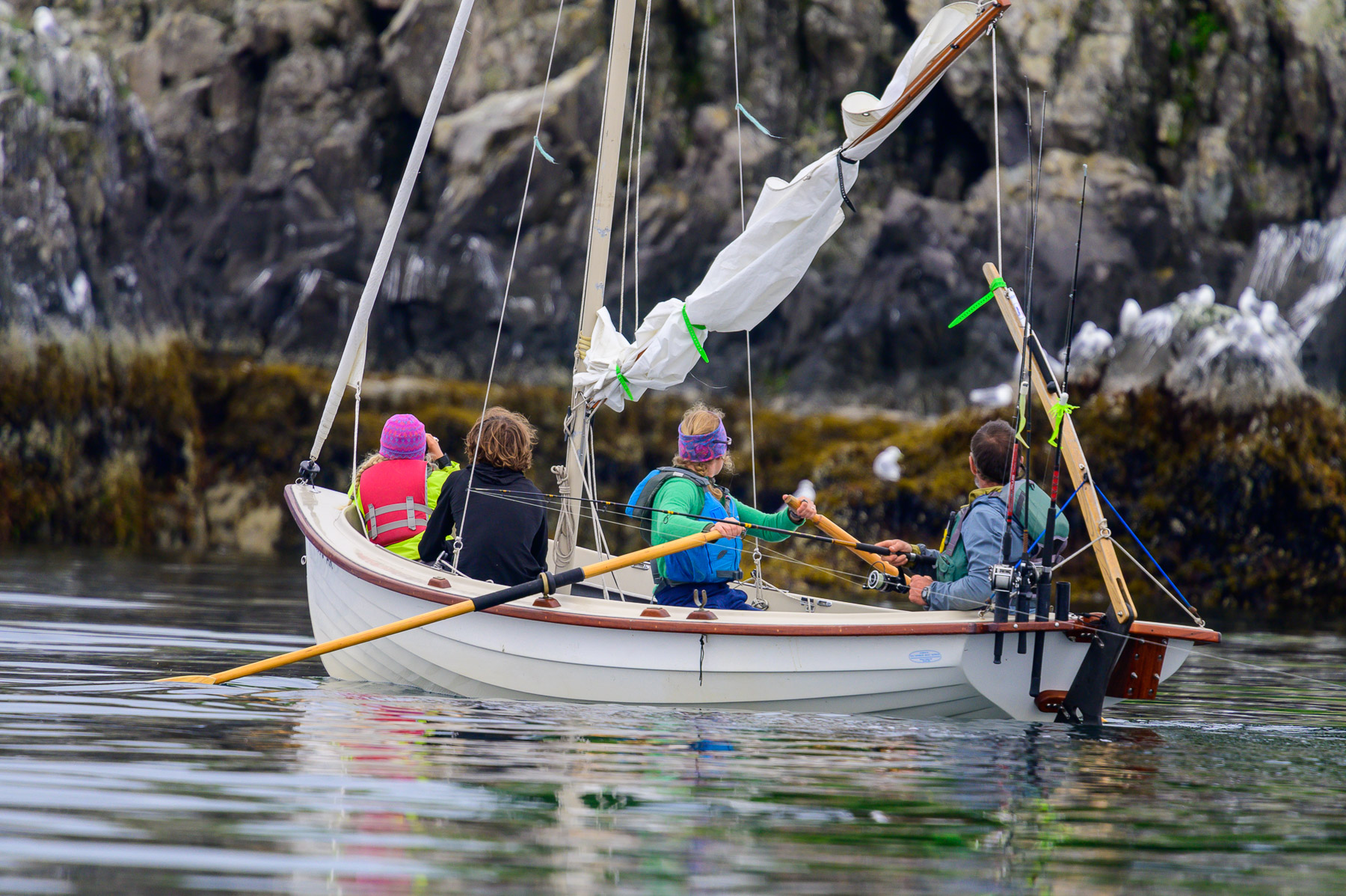
Camping and Anchoring Strategies
Our—by now well-practiced—anchoring system, proved an inspiration for Kirby.
We usually set anchor with two people. One person can do it, but especially in rough water, setting anchor alone gets hectic.
Once a camp has been identified, the stern person drops the anchor. As the other person rows to shore, the chain, rope, and eventually the buoy feed off the stern. If we guessed perfectly, the buoy will rest just outside the lowest tide we will get that night. The stern person then runs the tail of a 300-foot rope stacked in a bucket through a big ring on the buoy and attaches the end to a cleat at the stern.
As the bow person rows the boat to shore, the rope smoothly feeds off the top of a bucket. When the bow touches the beach, the anchor person jumps out with the bucket in hand. He or she walks to the nearest solid anchor, usually a tree, runs the rope around it, and heads back to the bow. We tie the anchor line to either the bowline or the bow itself, depending on how much extra rope we need. If all goes smoothly, we can be ready to unload, and ship the boat out on a pulley system for the night in about ten minutes.
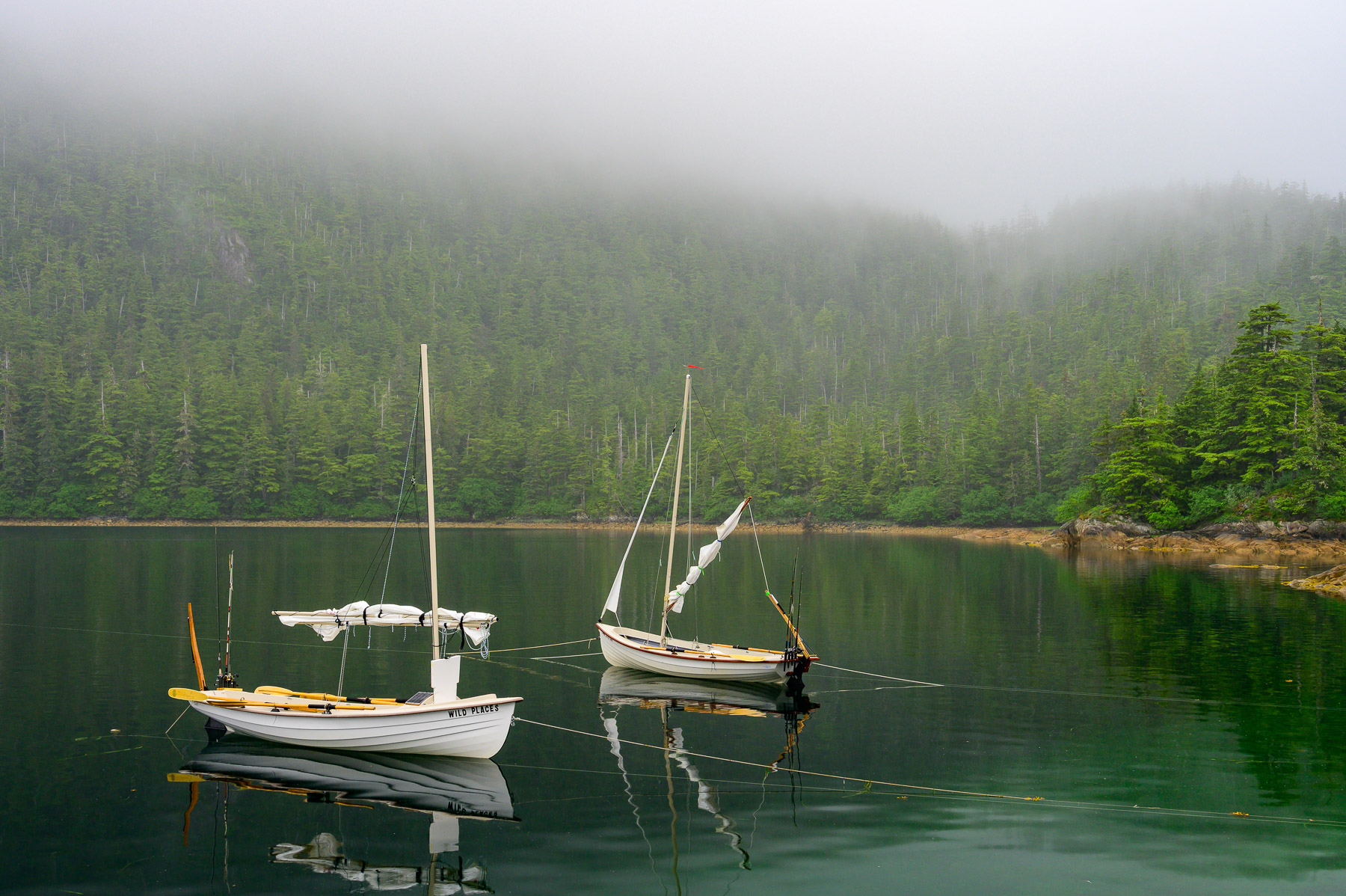
Before this trip, we had never taken a passenger in our Salish Voyager, except for a quick row around the harbor. We were surprised to learn that having an extra person on board was fairly comfortable. A kid fits best, but with a little ballast in the bow—like a heavy food bag on the front deck—we can take another adult. We kept a crazy creek chair on the back deck for riders.
While we mostly traveled in our family groups, it was fun to trade off, try other boats, and be with new people. Sailing the Salish Voyager with three people aboard was trickier than rowing and I wouldn’t try it in strong winds. However, in light winds, we sat one person in the bow as ballast and two in the stern. Since the Spangler family now has four captains—even their youngest, Wren age 11 has been at the helm—instead of climbing over each other when we tacked we simply handed the tiller to the person in the other captain’s seat who managed that tack.

The last few days of the trip brought our first serious storm. We spent it tucked into a well-protected cove with great fishing. At 10 a.m. on the day we planned to leave the ocean still held a lot of residual energy. We poked our heads out of the cove and encountered steep three-foot waves at the point. We decided to turn around and wait for the sea to calm down. While it was a tough decision, I couldn’t help but think that the experience of watching real decisions being made, based on the intersection of wind, waves, and currents at hand, regardless of our human desires, was a valuable lesson for 14-year-old mariner Raven.
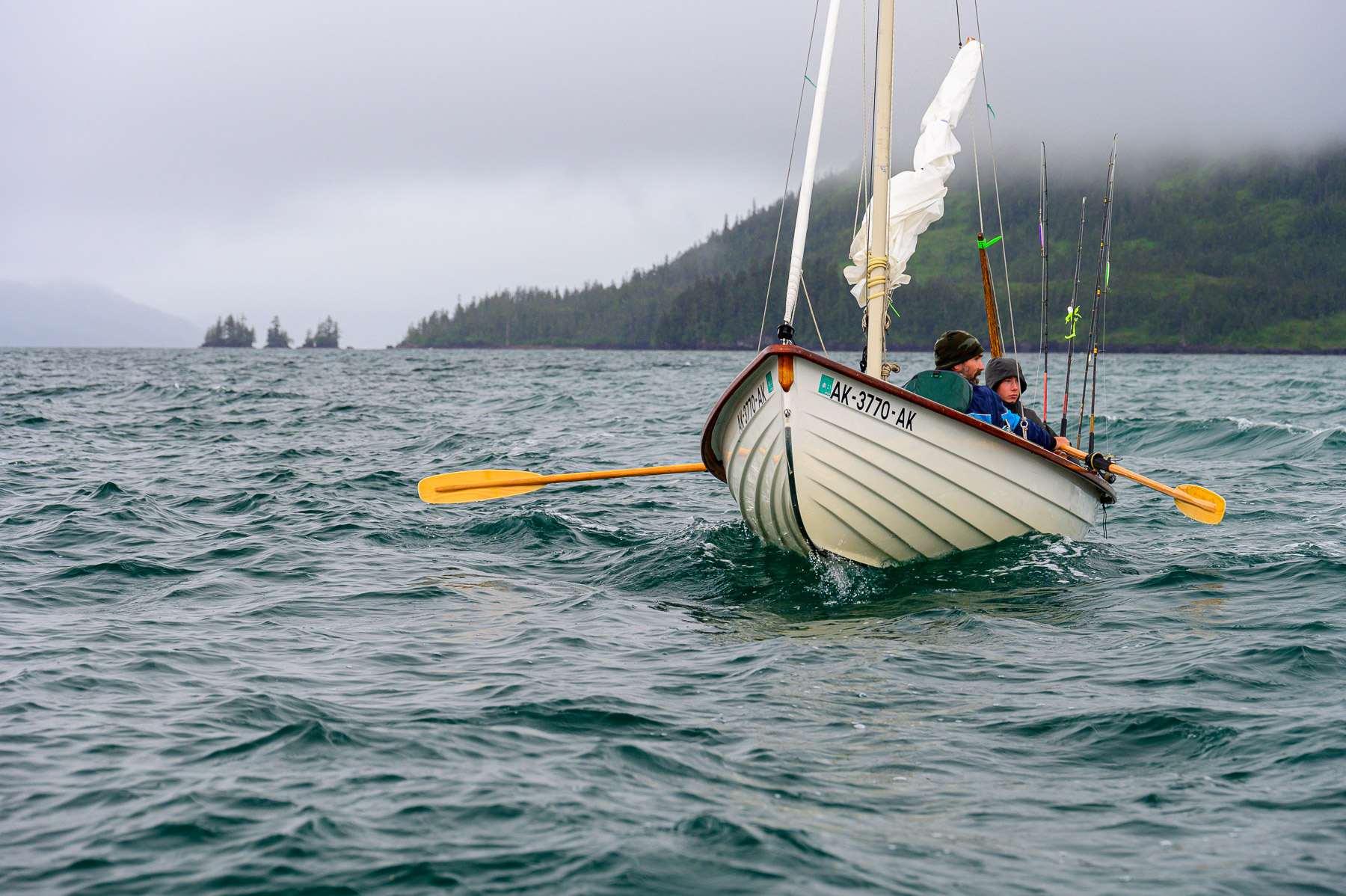
We tried again at 1 p.m. and had an enjoyable ride into Whittier in time to catch the 7 p.m. tunnel home. (The port town of Whittier Alaska is accessed by a one-way tunnel, only open on the hour, and closed at night)
Thanks for the update you two! Love seeing how these two boats compare in real life, and how traveling together made the journey even more enjoyable. For those following along at home who are pondering which one would work best for them, I think they’ll find your insights quite helpful!
P.S. to readers… We have an In-Stock Special on a brand new Jersey Skiff right now. You can learn more about it right here: https://ghboats.com/project/new-17-jersey-skiff-sailboat/
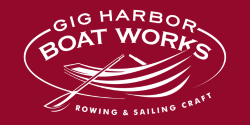
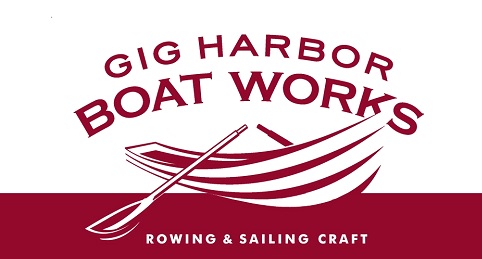
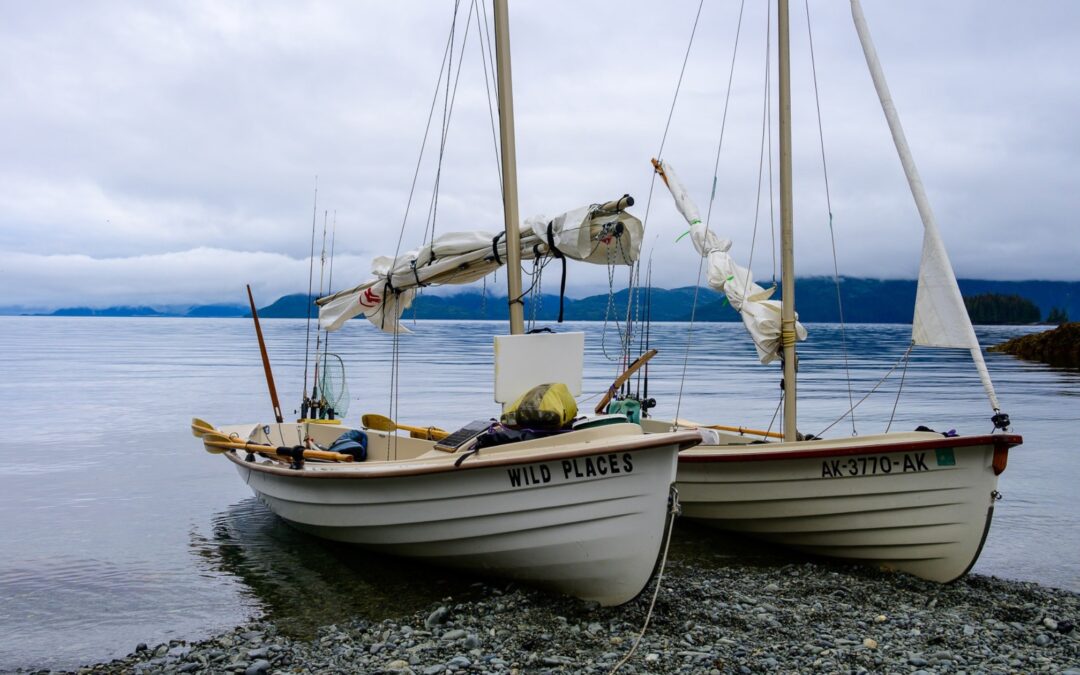
Great story and pictures! I look forward to more newsletters. Thankyou for sharing.
I’m very interested in how the sailing rigs compare. I love the idea of a simple lugsail, and wonder how it worked in real life, compared to the main and jib on the Jersey Skiff.